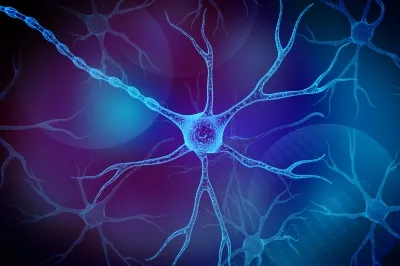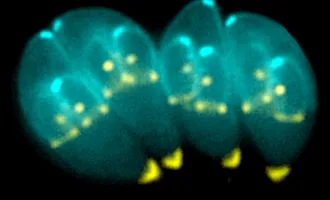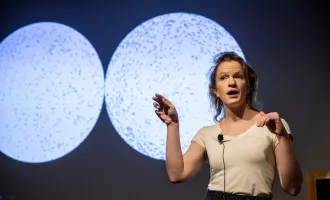
The Parts of the Brain
Consider brains and computers. How are they similar? Both can perform complex, rational tasks. Both take inputs and make decisions. More generally, both occupy physical space, although computers increasingly less so. As part of their physical nature, both can be subdivided into parts, the organization and connectivity of which creates their function.
The differences? While the parts of a computer are known, measured, manufactured, the parts of the brain remain quite ambiguous. On the macroscopic level of tissue structure, we can distinguish a cerebellum from a hypothalamus, the third ventricle from the fourth. But when it comes to classifying the component cells, describing their different functions and elucidating the proteins that drive those functions, we still rely on crude definitions.
The lab of Arnold Kriegstein, MD, PhD, at UCSF is trying to change this by helping to develop a “parts list of the brain,” in the words of Dr. Alex Pollen, a postdoc in the Kriegstein Lab.
Generating this parts list is one objective under the umbrella of the BRAIN Initiative (Brain Research through Advancing Innovative Neurotechnologies), a multi-billion dollar endeavor announced by President Obama in 2013. The BRAIN Initiative is a collaboration between government agencies, universities, and private foundations, and is considered the successor to the Human Genome Project as the next magnum opus of Big Science.
The goal of the BRAIN Initiative is ambitious, yet simple: how does the brain work? Before this question can be asked, however, we must first ask: what is the brain made of?
This is where we turn to the recent work of Pollen and fellow post-doc Dr. Tomasz Nowakowski, who published a study in the Sept. 24th issue of Cell, in which they pin down the molecular characteristics of the outer radial glia (oRG), a stem cell found in the developing neocortex.
Previous work from the Kriegstein lab suggested that this cell type, almost completely unknown as of a few years ago, generated most of the 16 billion neurons found in the human cortex. The oRGs are not just any part of the brain, but a very significant one, perhaps the main motor for creating the wrinkly gray tissue we value so highly.
While this cell type had previously been observed and some of its behaviors characterized, almost nothing was known about the molecular pathways that make it unique and provide it with its function. There was no reliable ID card for this cell type. It was reasonable to ask whether this was actually a unique cell type or simply a known cell type operating in a new location.
When it comes to identifying and classifying cells, historical definitions often based on the morphology of a cell (its shape) can be misleading. For instance, the intermediate progenitors, another cell type common in the developing cortex, adopt a range of morphologies. A more reliable cell ID card can be created by identifying the “molecular signature” of a cell: the specific patterns of RNA, and thus protein, that a cell creates in the process of carrying out its specialized function.
But how do you take a tissue sample consisting of thousands or millions of cells, with a combination of many cell types, and say which signature belongs to which cell type? It’s like trying to fingerprint the doorknob of a bathroom at Grand Central Station.
The trick is not to look at all the cells simultaneously, but to isolate single cells. New microfluidic technologies are emerging that allow exactly this: single-cell RNA transcriptomics, a mouthful that translates to shooting cells one at a time through small chambers in which reactions take place to isolate their individual RNA. Ultimately, researchers can quantify the expression level of thousands of genes in each cell. To perform these experiments, the Kreigstein Lab collaborated with Fluidigm Corporation, a leader in this field.
Pollen, Nowakowsi, and company dissected three human brain samples, yielding 393 cells. The next step was to group the cells together based on having similar signatures, using a method called Principal Component Analysis (PCA).
Perhaps the greatest attribute of PCA is that it makes no assumptions about how many cell types there might be in the sample. As Dr. Pollen said, “we let the variation speak for itself.” This type of computer-driven grouping is called in silico sorting, but to make strong claims you need to go back to the living thing.
“The single-cell analysis is hypothesis generating, but you need independent types of validation to relate the signature back to position, behavior, morphology,” says Pollen.
Indeed, the group not only found a bona fide molecular signature for oRG cells, but also saw that many of the enriched genes were related to how the oRGs function as stem cells. To Pollen, this was not necessarily so surprising: “the markers that define cell types aren’t simply markers. They again and again suggest a functional coherence.”
Specifically, many of the enriched genes allowed the oRGs to create and maintain their own stem cell niche. Stem cell niches are microenvironments surrounding stem cells that maintain their capacity to be stem cells.
The creation of niches is often dependent on a community of different cells interacting together, but in this case the oRGs appeared to act like pioneers, creating their own homes wherever they might migrate. This behavior is likely essential to their capacity to generate so much of the neocortex. Ultimately, these hardy cells are partially responsible for the large size of human brains.
So far, research across species seems to indicate that the oRGs are a prized possession of human and other primate brains, but are rare in mice. They may be found in other species with large brains, like dolphins. While this study did not aim to explain the evolution of the primate brain, the oRGs now stand out as a tantalizing candidate for further investigation.
The molecular signature identified by Pollen, Nowakowski, and others will help facilitate further studies on the oRGs themselves. The signature allows researchers to purify populations of cells that are all oRGs and to “further zoom in on molecular heterogeneity throughout this population,” according to Pollen.
The technique, with its unbiased approach, will also be useful to distinguish cell populations in other regions of the brain, the ultimate goal being a kind of census of the brain.



